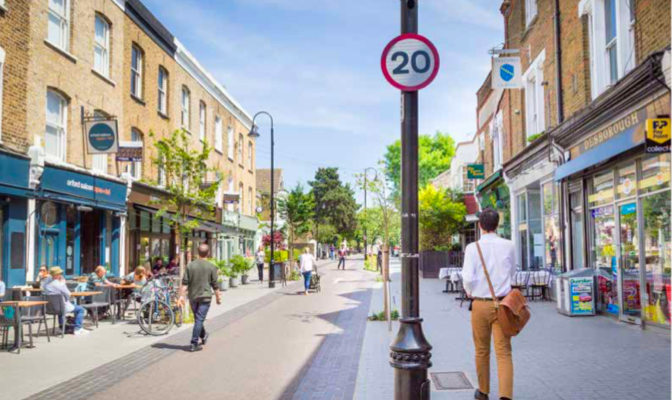London has reduced traffic deaths nearly 50 percent in the last decade, but Mayor Sadiq Khan isn't satisfied. On Tuesday, Khan announced the release of a plan to reduce traffic fatalities and serious injuries 70 percent by 2030, and to eliminate deaths entirely by 2041 [PDF].
London's commitment to traffic safety is notable because traffic fatalities are already much rarer there than in any large American city. For many years, the city has intentionally reduced car traffic, added pedestrian zones, and carved out street space for buses and bicycling. One result has been an impressive 59 percent drop in fatalities and serious injuries since 2000.
For cities struggling to make any tangible progress on Vision Zero, London offers a better example than anywhere else in America. Even New York, where traffic deaths are falling, has nearly twice the per capita traffic fatality rate as London.
While Khan's plan includes several initiatives that were already underway, the scope of it remains impressive and worth attention. Here's a look at the major initiatives.
1. 20 mph zones
London will reduce the speed limit to 20 mph throughout its entire center-city congestion charging zone, an area of eight square miles. In the rest of the city, the speed limit will be reduced to 20 mph at "37 town centers and high risk locations."
2. Safer intersections
Transport for London has systematically identified and redesigned 21 of the city's 73 most dangerous intersections so far. Khan's plan calls for spending £54 million over the next four years to fix the intersections that are causing the biggest hazards, with 33 more either completed or in progress by 2023.
3. "Healthy Streets"
London is investing significant resources in street projects that make walking, biking, and transit more appealing, with an eye toward reducing "the dominance of motorized traffic" in the city. In addition to bus lanes and bike lanes, the treatments include benches, street trees, and public art. By 2041, the goal is to eliminate three million car trips per day, or a reduction of 10-15 percent.
4. Safer vehicles
Large vehicles are involved in a disproportionate share of traffic deaths, especially pedestrian and cyclist fatalities. Though heavy trucks account for less than 5 percent of vehicle miles in London, they account for 50 percent of cyclist fatalities.
London is very serious about imposing better design standards for vehicles that can cause the most harm. The city is working with manufacturers to redesign its buses with speed-limiting technology and more forgiving front ends, with an eye toward fatal bus collisions by 2030.
In addition, London is cracking down on commercial trucks that have big blind spots and other safety hazards. The city has developed a five-star rating system for commercial trucks. In 2019, the commercial trucks with the worst rating will no longer be allowed on London streets.
5. Responsive policing
London is taking a thoughtful approach to enforcement. The city's strategy calls for targeting the drivers who cause the most harm, including those who repeatedly drink and drive or text and drive.
Police response to crashes will be much more comprehensive than in the U.S. London's police department houses a "Serious Collision Investigation Unit" that will not only investigate the most severe cases of reckless driving, but also identify the factors causing a wide range of collisions to help the city prevent crashes.







